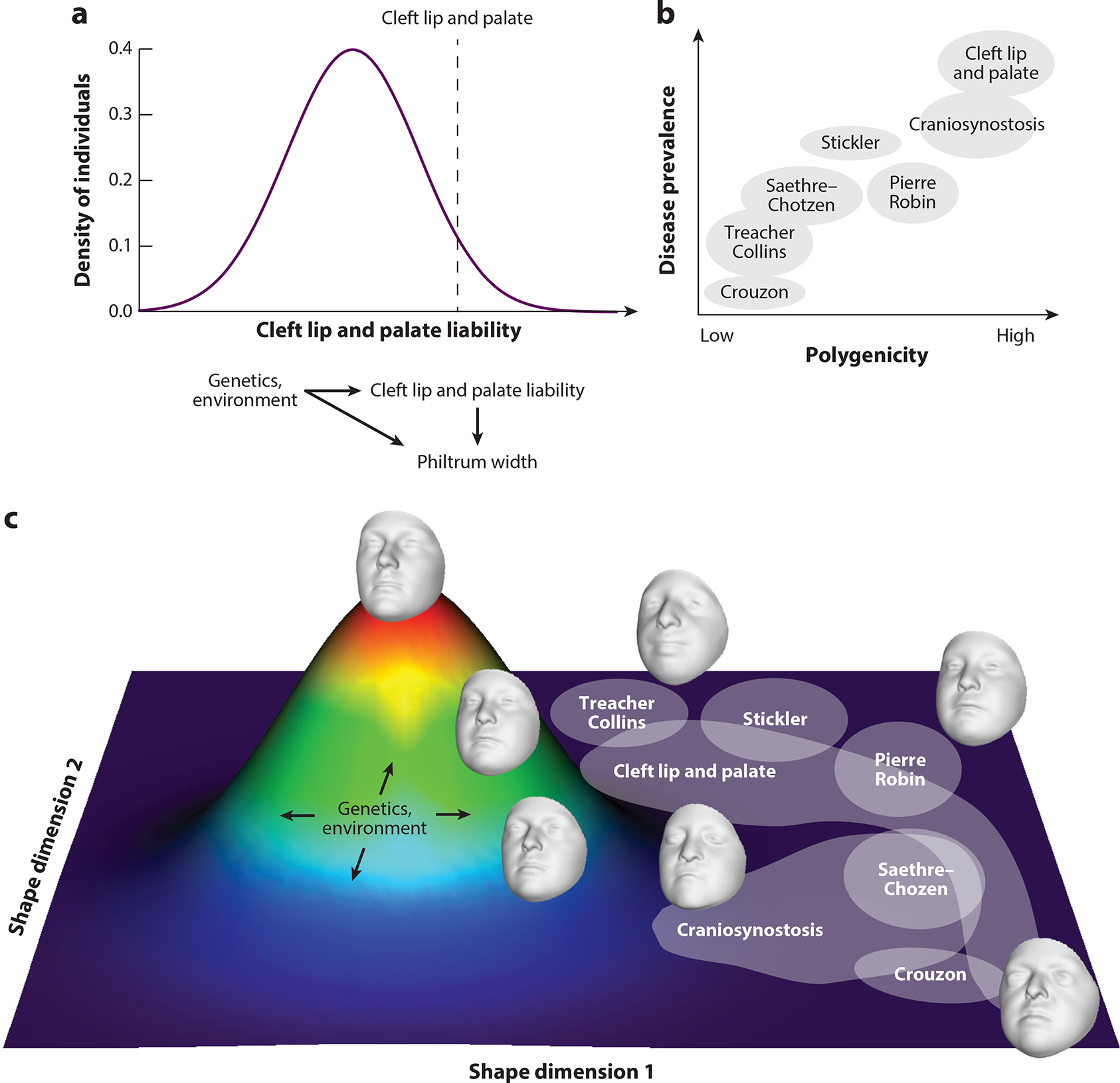Figure 3.

A multivariate model linking craniofacial shape and disease. (a) In standard liability threshold models, disease risk, which can be modulated by genetics or the environment, manifests itself as a univariate trait, or endophenotype (e.g., philtrum width for nonsyndromic cleft lip and palate). (b) Craniofacial disorders have a range of genetic architectures, from highly polygenic (right) to monogenic with largely Mendelian inheritance (left). (c) In the proposed multivariate shape space model, variation along multiple axes of shape (only two of which are shown for visualization purposes) leads to distinct yet overlapping zones of disease in the multidimensional shape space. The craniofacial syndromes are arranged approximately according to phenotypic similarity. Facial morphs for syndromes were created by first creating a univariate shape score distinguishing individuals with the syndrome from healthy controls and then moving four standard deviations along the univariate syndromic axis.
